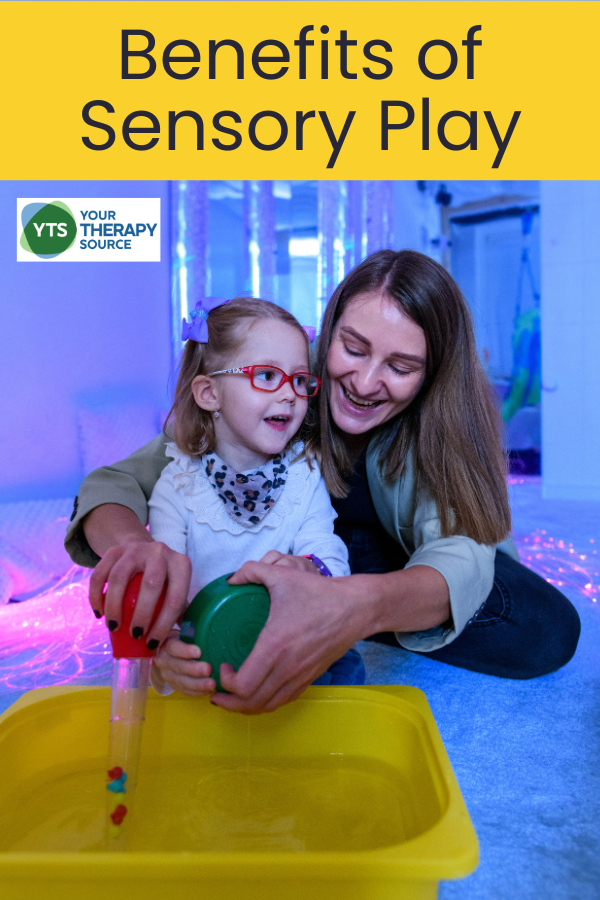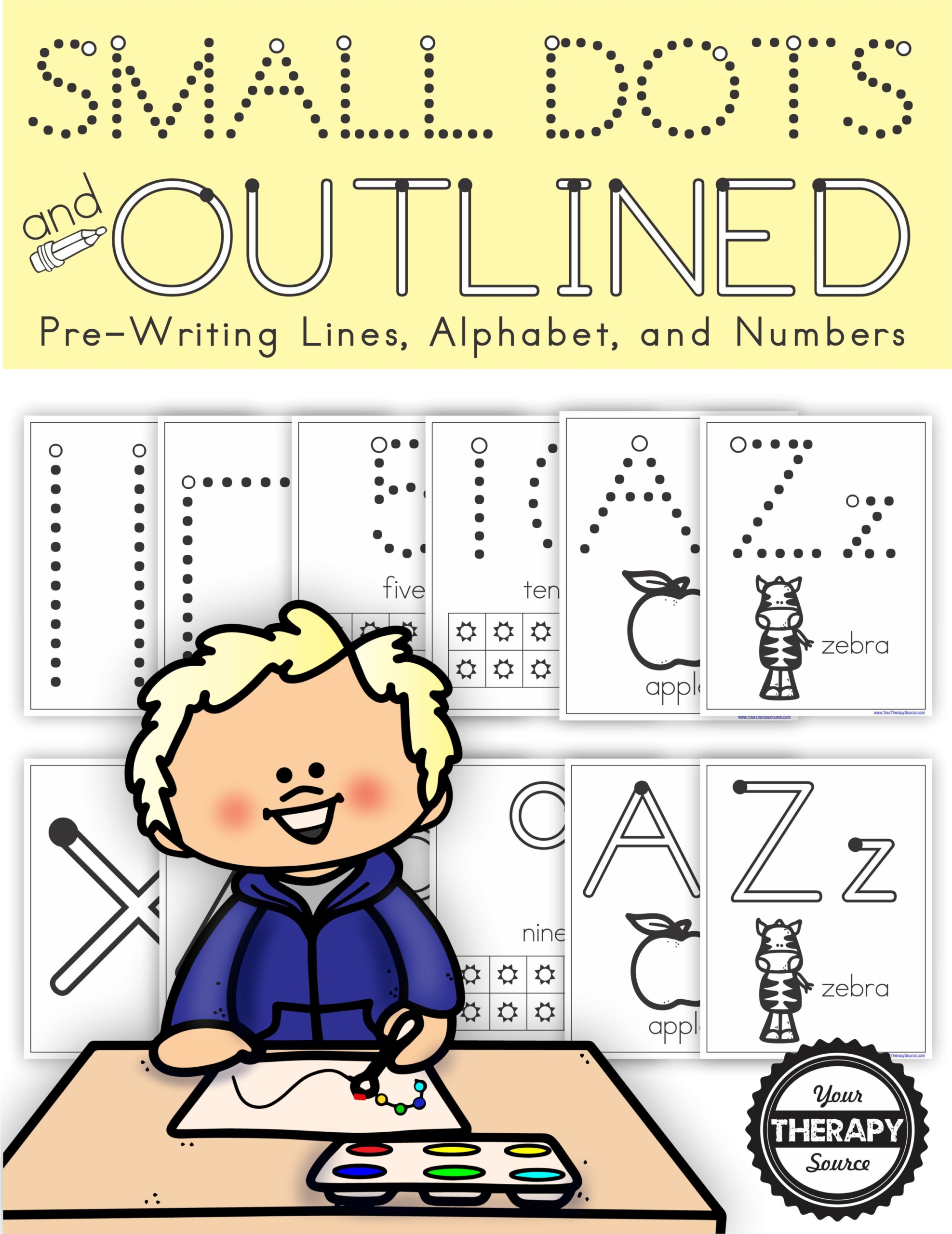Benefits of Sensory Play

Sensory play is a fun and interactive way for kids to learn through their senses. It includes activities that stimulate touch, sight, hearing, taste, and smell, making it perfect for young explorers like toddlers and preschoolers. The benefits of sensory play are numerous! Here’s a simple breakdown of what sensory play is, its benefits, some easy ideas to get started, and more resources on PLAY! You can download a printable handout of this article at the bottom of the post.
What is Sensory Play?
Before getting into the specifics, let’s define sensory play and understand its significance in early development. It’s a type of play that engages a child’s senses, making learning more hands-on and impactful.
In very simple terms:
- Sensory Play: Activities that involve different textures, materials, and actions to stimulate some of the child’s 8 senses.
- Good for Learning: Helps children grasp complex concepts by experiencing them directly.
- Builds Skills: Essential for cognitive growth, problem-solving, and developing fine motor skills and gross motor skills. Sensory play helps to build nerve connections.
The 8 senses that may be involved in sensory play are:
- Visual (Sight): The ability to see and interpret the environment through light, colors, shapes, and movement.
- Auditory (Hearing): The ability to hear and process sounds, tones, and language.
- Olfactory (Smell): The sense that detects and identifies different odors and scents.
- Gustatory (Taste): The ability to taste and distinguish flavors, such as sweet, salty, sour, or bitter.
- Tactile (Touch): The sense of touch, including the ability to perceive pressure, temperature, and texture. Some children LOVE it, some HATE it, and many fall between the two extremes.
- Proprioceptive: The proprioception sense provides information about the position and movement of the body, including the sense of muscle force and the position of limbs.
- Vestibular (Balance): The vestibular sense helps with balance, spatial orientation, and coordination, providing information about movement and the position of the head in relation to gravity. Playing on a swing activates the vestibular sense.
- Interoceptive: The lesser-known interoceptive sense helps you understand and feel what’s going on inside your body, such as hunger, thirst, heart rate, and the need for bathroom breaks.
Why Sensory Play Rocks
Sensory play isn’t just fun; it’s a crucial part of childhood development. Here are the main benefits of sensory play:
- Boosts Learning: Through sensory play, children can explore materials like sand or play dough, which helps them understand new concepts, develop problem-solving skills, and promotes cognitive development.
- Helps With Language Development: Discussing the sensory experience helps expand a child’s vocabulary.
- Boosts Social Interactions: It encourages kids to interact, share, and cooperate with others.
- Fun With Different Shapes and Sounds: Exploring different objects and sounds introduces basic scientific and mathematical concepts in a fun way.

A to Z Dot Marker Activities
Easy Sensory Play Ideas
Getting started with sensory play is easy and doesn’t require expensive materials. Here are some simple yet effective sensory play ideas.
- Sensory Bins: A container filled with rice, pasta, beans, or sand provides a versatile sensory experience.
- Music and Movement: Playing with musical instruments engages the sense of hearing and encourages physical activity.
- Creative Mess: Materials like play dough or shaving cream offer tactile experiences that spark creativity.
- Discovery Boards: Boards equipped with various textures and objects promote exploration and fine motor skills.
Benefits for the Brain and Body
Sensory play contributes significantly to both cognitive and physical development. Let’s look at how it supports growth in various areas.
- Better Balance: Activities that involve movement, such as swinging, improve physical coordination and balance.
- Thinking Skills: Sorting and categorizing activities lay the groundwork for understanding math and science concepts.
- Creative Minds: Open-ended sensory activities foster imagination and problem-solving abilities.
- Happy Learning: Above all, sensory play makes learning enjoyable, encouraging a lifelong curiosity and love for exploration.
How to Get Started
You don’t need a lot of time or resources to incorporate sensory play into your child’s routine. Here are a few tips to begin.
- Keep it Simple: A straightforward activity like a sensory bin or supervised water play can provide hours of exploration. Head outdoors for easy sensory play in nature.
- Talk About It: Use sensory play as an opportunity to engage with your child and enrich their vocabulary.
- Play Together: Participating in sensory play with your child strengthens bonds and enhances the learning experience.

Q-Tip Painting Printables – Prewriting, Alphabet, and Numbers
Resources for More Ideas
For those looking to expand their sensory play repertoire, these resources are packed with valuable information and creative ideas.
When Kids Aren’t Fans of Sensory Play
Not every child immediately takes to sensory play. For some, the textures, sounds, and other sensations that come with these activities can be overwhelming or unappealing. This reluctance can sometimes be a sign of sensory processing disorder (SPD). This is where the brain has trouble receiving and responding to information that comes in through the senses. Kids with SPD may find certain sensory inputs too much to handle, leading them to avoid sensory play activities.
Sensory processing disorder can manifest in various ways, from extreme sensitivity to textures (like sand or play dough) to being unbothered by injuries or not noticing smells or sounds that others react to. It’s a broad spectrum, and each child’s experience with SPD is unique. If you notice your child consistently avoids sensory play or reacts negatively to sensory experiences that most children find enjoyable or at least neutral, it might be worth exploring whether sensory processing issues are at play.
Occupational Therapy: A Path Forward
Occupational therapy (OT) can be a beacon of hope for families navigating the challenges of SPD. Occupational therapists are trained to help children with sensory processing issues by introducing them to structured sensory play activities designed to improve their sensory integration. Here’s how OT can make a difference:
- Personalized Activities: Occupational therapists create personalized sensory play plans that gently expose children to sensory experiences, helping them learn to process and respond to sensory information more effectively.
- Skill Development: Through targeted activities, OT helps children develop the skills they need to participate more fully in everyday life, from dressing themselves to interacting socially with peers.
- Empowering Families: Occupational therapy provides parents and caregivers with strategies and activities to support their child’s sensory needs at home, fostering an environment where the child can thrive.
Embracing Individual Needs
Parents and educators must recognize and respect each child’s individual sensory preferences and needs. While sensory play is beneficial for many children, those with SPD may require a more tailored approach.
With understanding, patience, and the right support, every child can find ways to engage with the world around them that feel comfortable and enjoyable. Occupational therapy can play a crucial role in this process, offering strategies and interventions that make a real difference in the lives of children with sensory processing disorder.
Sensory play offers a world of discovery and learning, providing a solid foundation for a child’s development. It’s a delightful way to explore, understand, and connect with the world. So, let the fun begin, embrace the mess, and watch your child grow and thrive through sensory play.
DOWNLOAD A PRINTABLE COPY OF THIS ARTICLE
Get access to this post in a printable handout format.
GET MY PRINTABLE COPY OF THIS ARTICLE ON THE BENEFITS OF SENSORY PLAY



